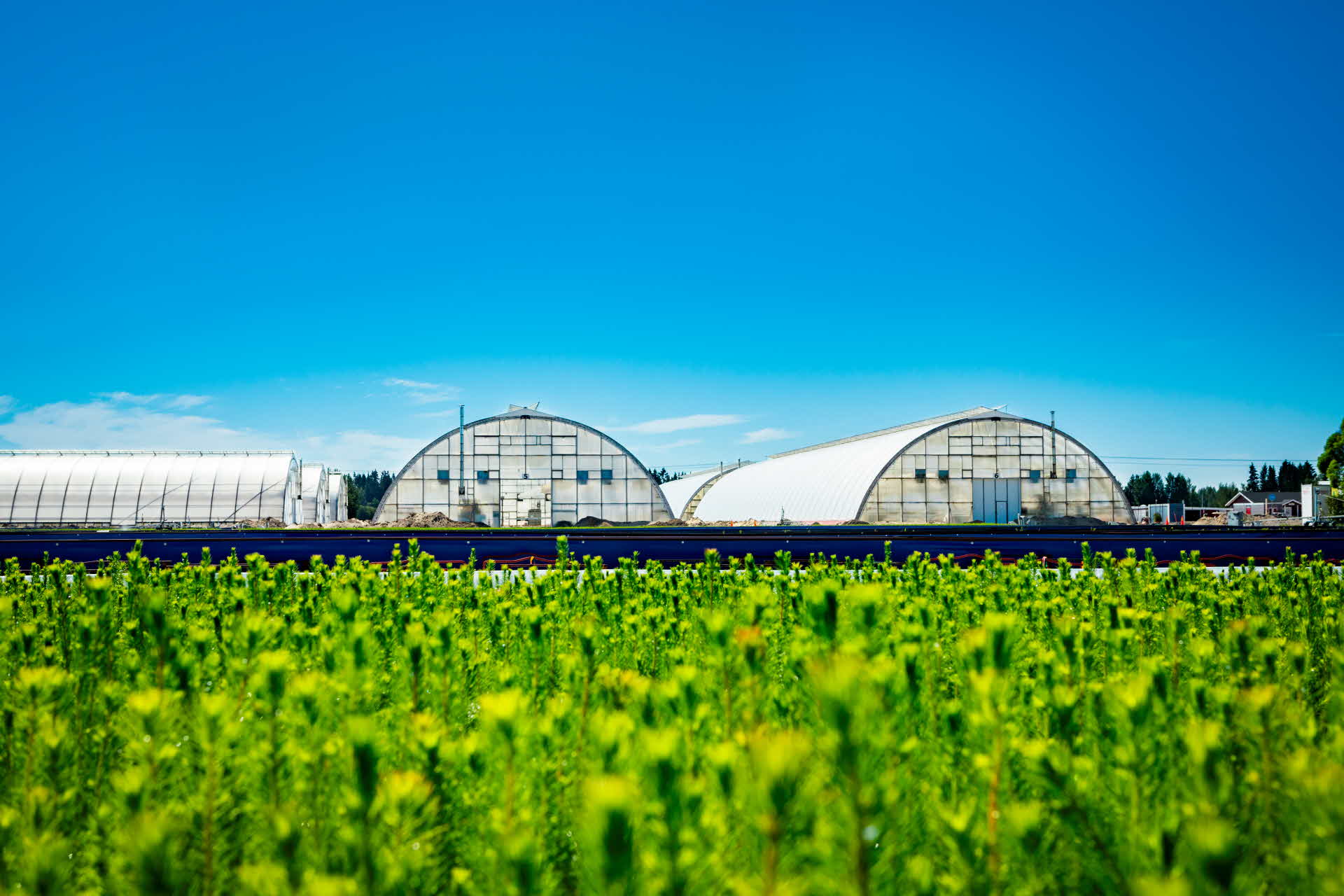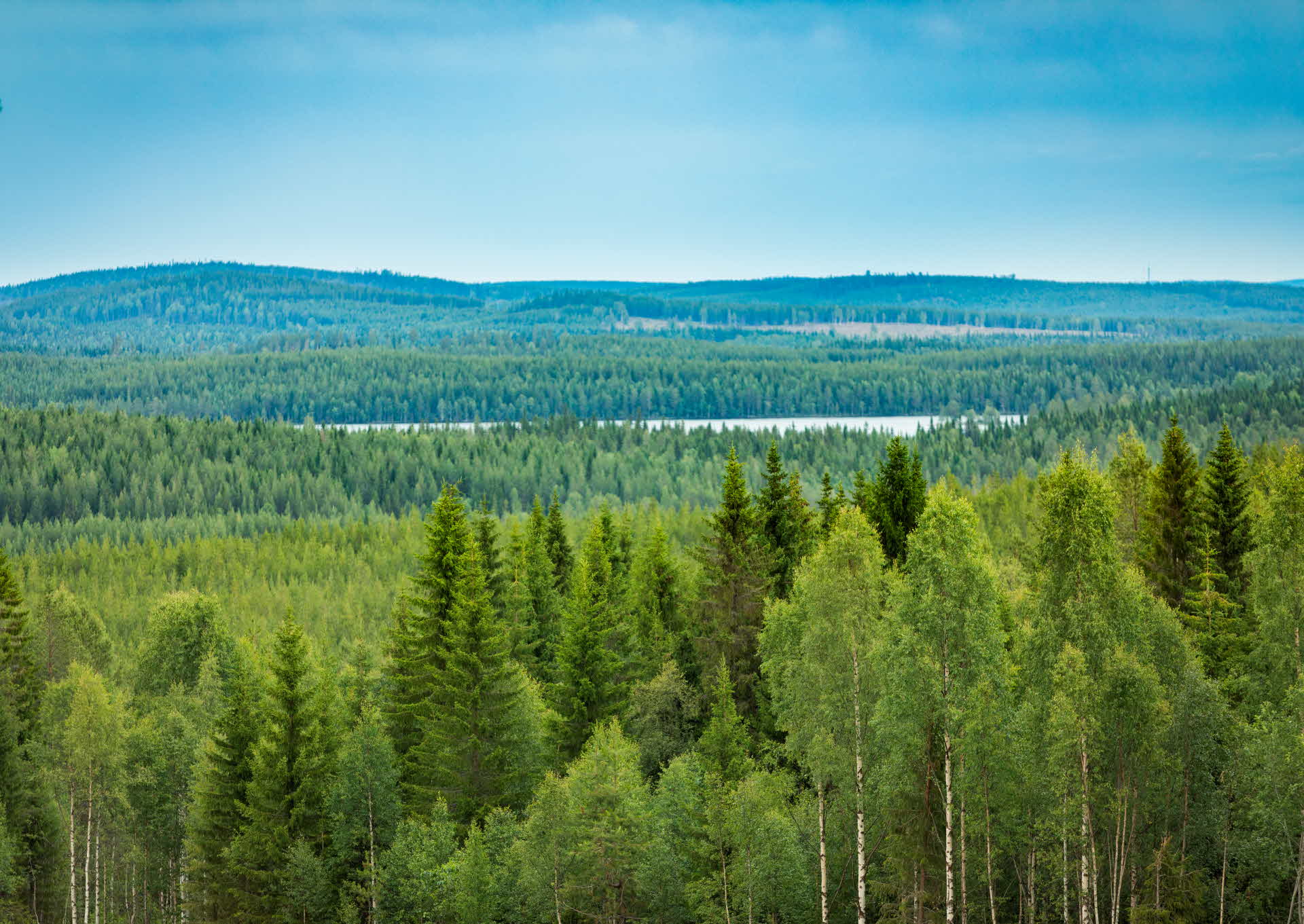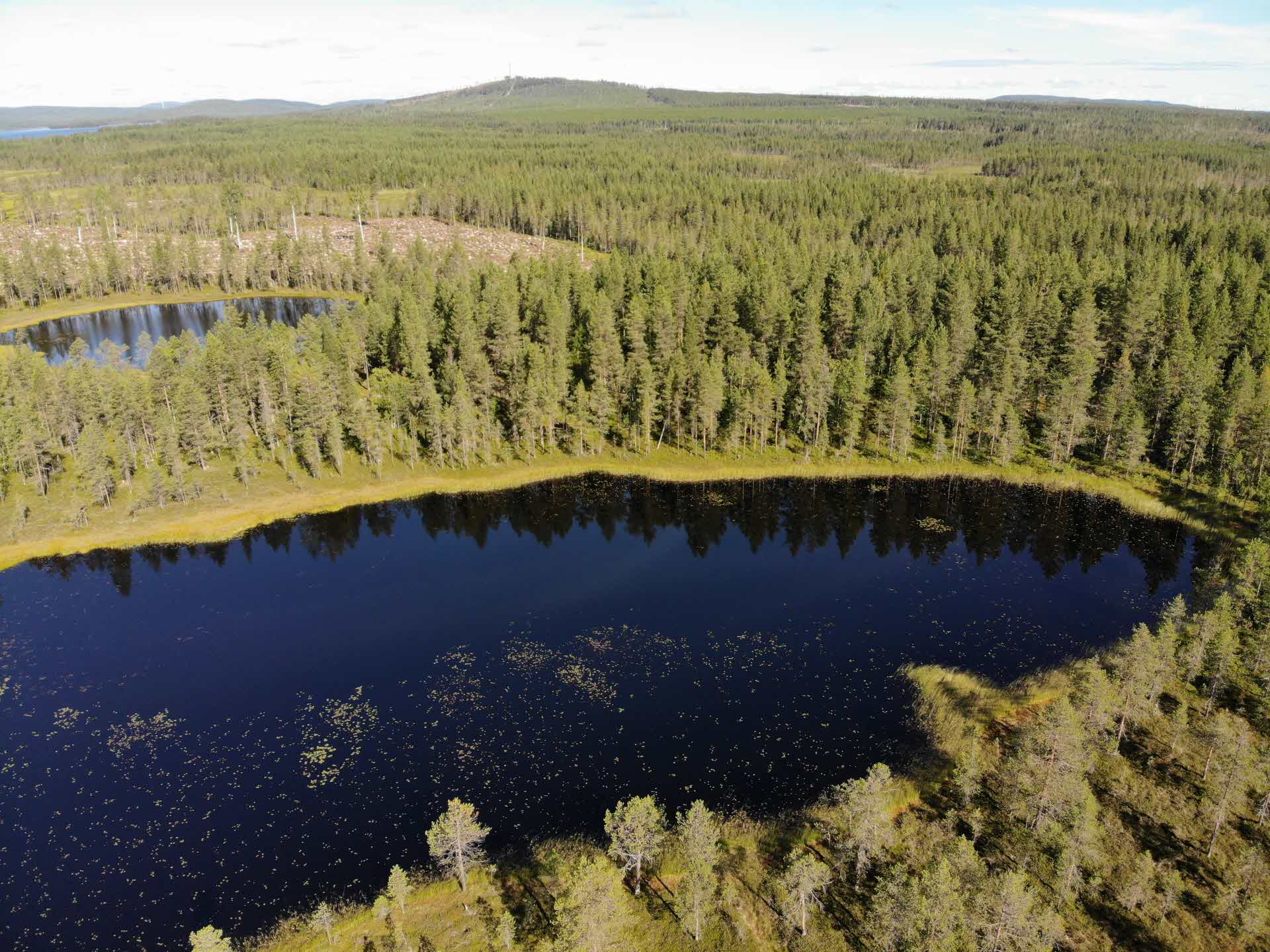
- FOREST
- SCA's FORESTS
- RESPONSIBLE FORESTRY
- THE FORESTRY ECOCYCLE
The forestry ecocycle
Our forest management follows an infinite cycle. From regeneration harvesting, soil scarification and planting to pre-commercial thinning, thinning and back to regeneration harvesting. The rotation period of the forest is between 80 and 120 years.
Regeneration harvesting

Final felling of the forest takes place when it is between 80 and 120 years old. Prior to final felling, a plan is drawn up for the relevant site. Operational planning encompasses planning timber production, how the area should be harvested, which roads are needed, how machinery should drive to protect the soil and the nature conservation measures we should take.
At this point we also begin to plan for the next generation of forest and the measures needed to ensure regeneration.
Soil scarification
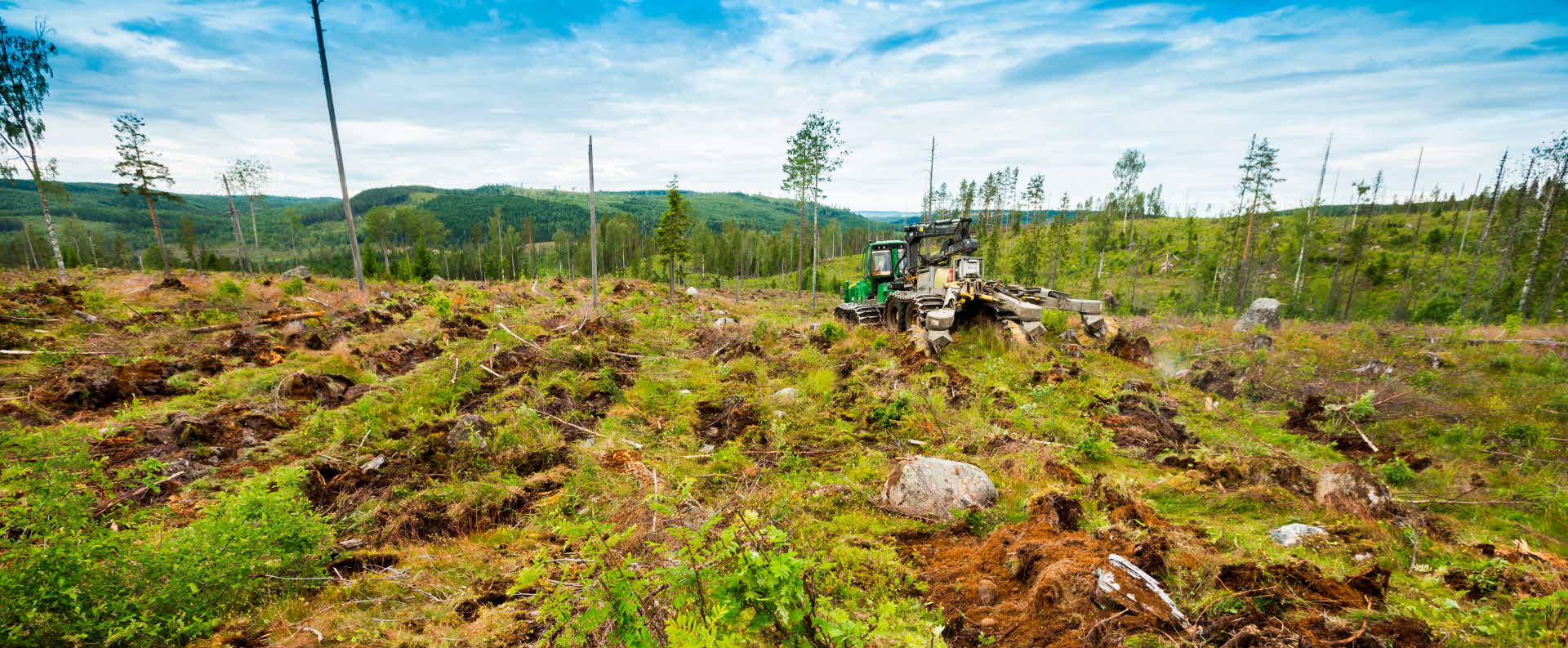
One to two years after felling it is time to prepare the soil for the new forest that will grow there. Through soil scarification, we create a better environment for seedlings to grow. They are provided with a warmer location to grow in, less competition from other vegetation and better access to nutrients and water. Last but not least, the seedlings are protected from pine weevils – beetles that feed on the seedlings so they run the risk of dying.
Planting
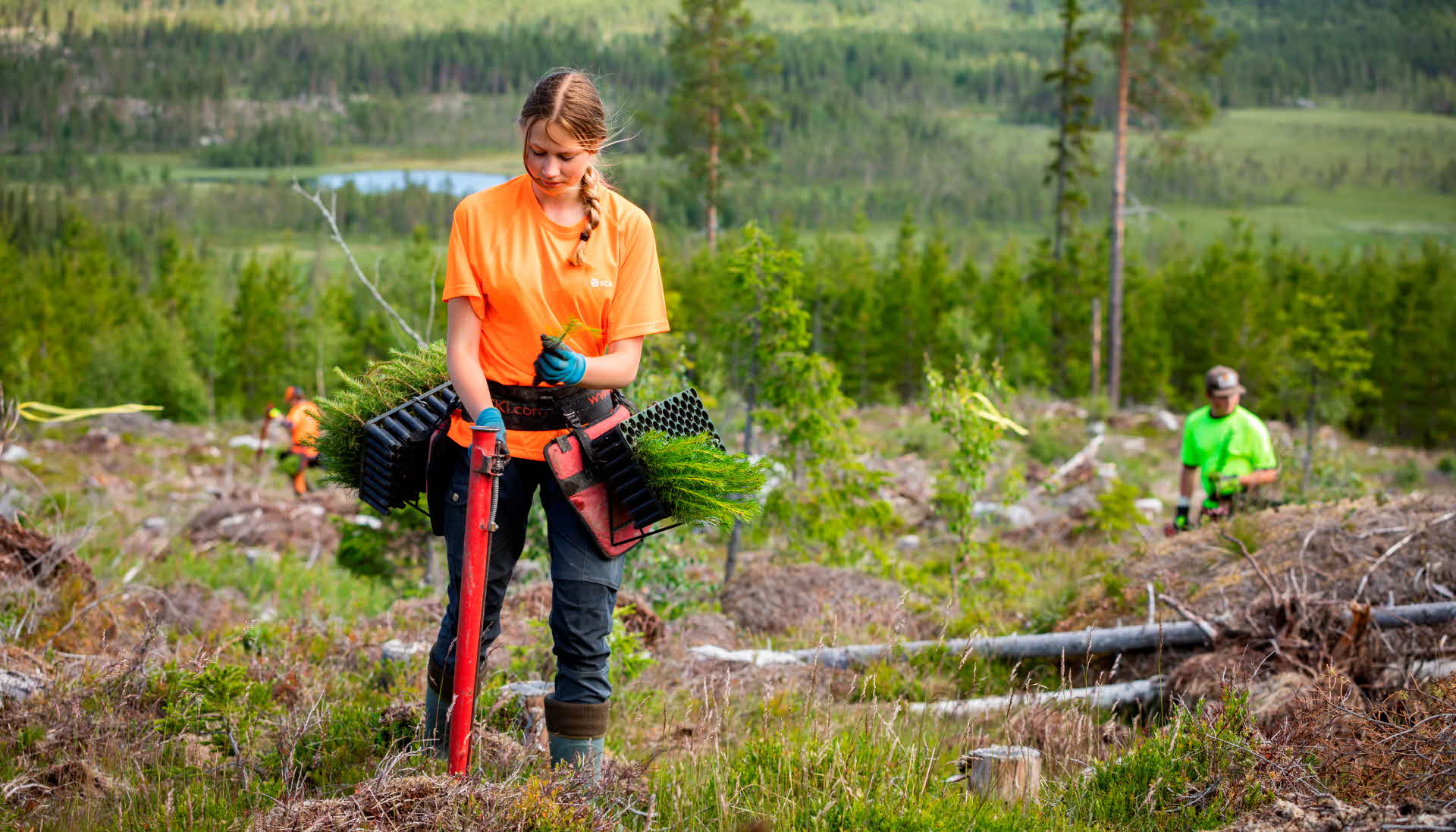
Two to three years after site preparation, it is time to start creating the next generation of forest. There are different ways to create new forest: planting, sowing and natural regeneration.
Planting is the most common and by far the most effective method. You gain one year of growth from the outset and above all the forest will grow much better throughout the entire rotation period. Today, it is possible to purchase seedlings that grow about 25–30% faster than forest that has undergone natural regeneration. All plants come from SCA’s own Bogrundet and Wifstamon plant nurseries. All planting is performed by contractors and since it is so important that the plants are given a good start, we train contractors and their employees in the planting process.
When natural regeneration is the chosen method, we leave behind seed trees after harvesting and these are allowed to stand for between five and 15 years.
The seeding method is not used very often on our land. SCA primarily sows contorta seeds purchased from Canada.
Regeneration control

At most two years after planting, the seedlings are checked to see how they are growing in our forests and at private forest owners who have a contract with us for regeneration control via our planting service with regeneration guarantee. The control is performed by inspecting the site on foot. For forests using the natural regeneration method, this regeneration control is conducted four to seven years after final harvesting and in areas where seeds were used, it is performed after four to five years.
Five years after the regeneration control, we conduct a forest inventory of SCA’s own forest using a helicopter to identify forests where pre-commercial thinning is required. Such an inventory is performed on a regular basis at a maximum of five-year intervals.
Pre-commercial thinning
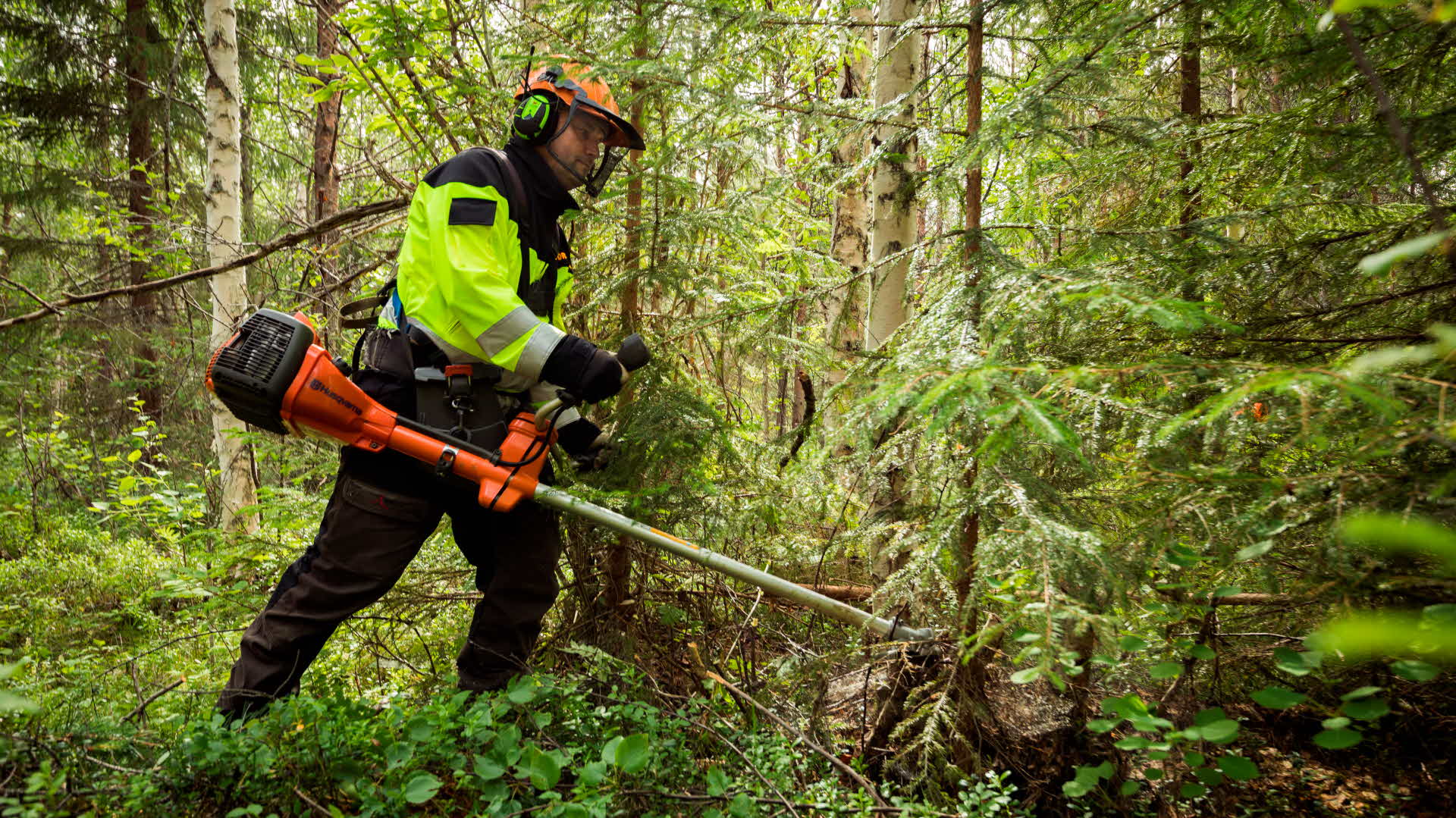
When the forest has been growing for about ten years, it is usually time for the first pre-commercial thinning. Some trunks are removed, which provides better conditions for the remaining trees to grow. This improves the quality of the future forest and is more economically beneficial when the time comes for thinning. Pre-commercial thinning gives us extensive scope to influence the future forest. Pre-commercial thinning can be conducted on several occasions depending on the need that exists.
Young stand inventory
When trees reach approximately eight meters in height, which occurs when they are between 20 and 30 years old, an inventory is conducted of the young stands. This is done to gather information about the forest holding and gather data concerning such aspects as volume per cubic meter for the various tree species.
Thinning
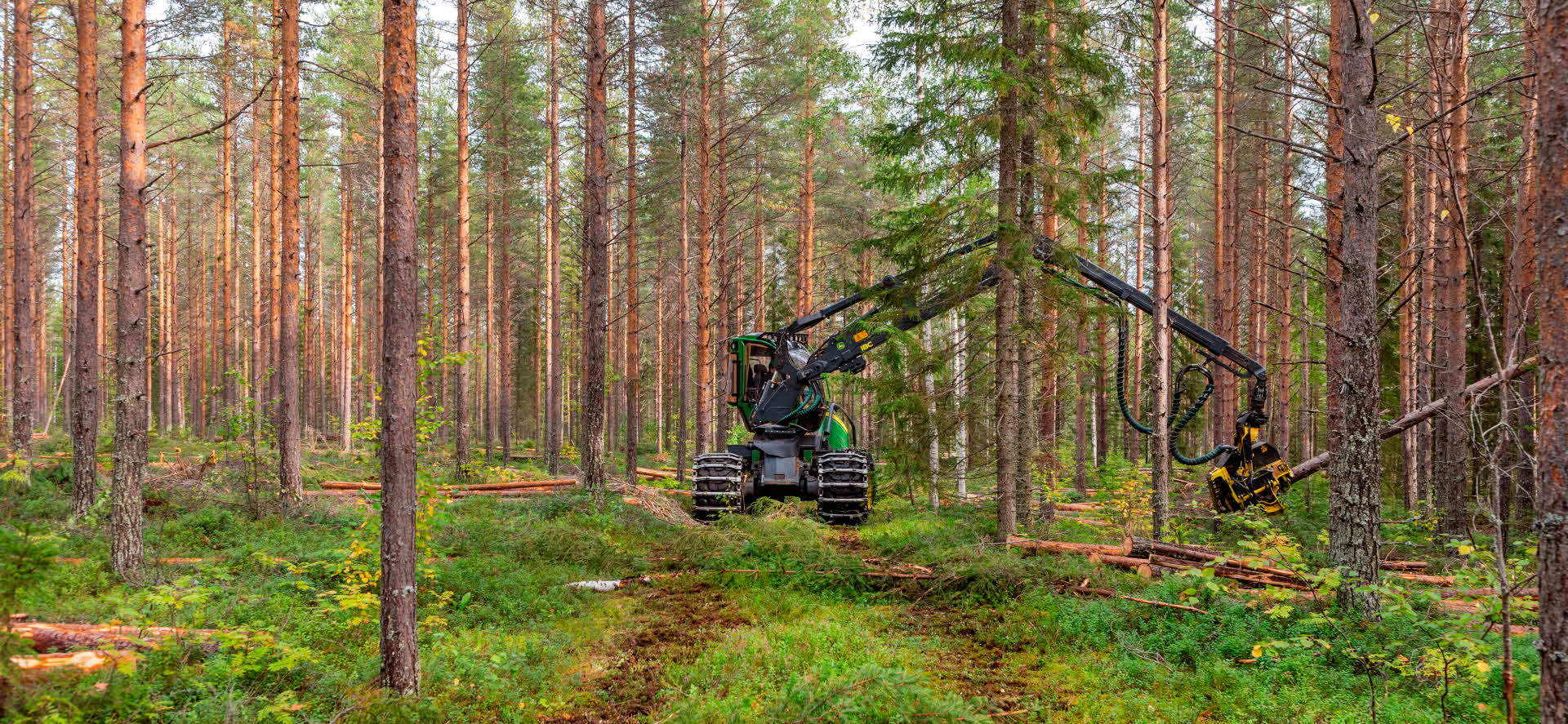
When the forest is about 40 years old and the trees are becoming too tightly spaced it is time for thinning. We often remove small-diameter trees of poorer quality and leave the finest trunks standing. The remaining trees are given more light, nutrients and water and can grow into more valuable timber before the time for final felling. We usually conducting thinning once or twice.
Fertilization
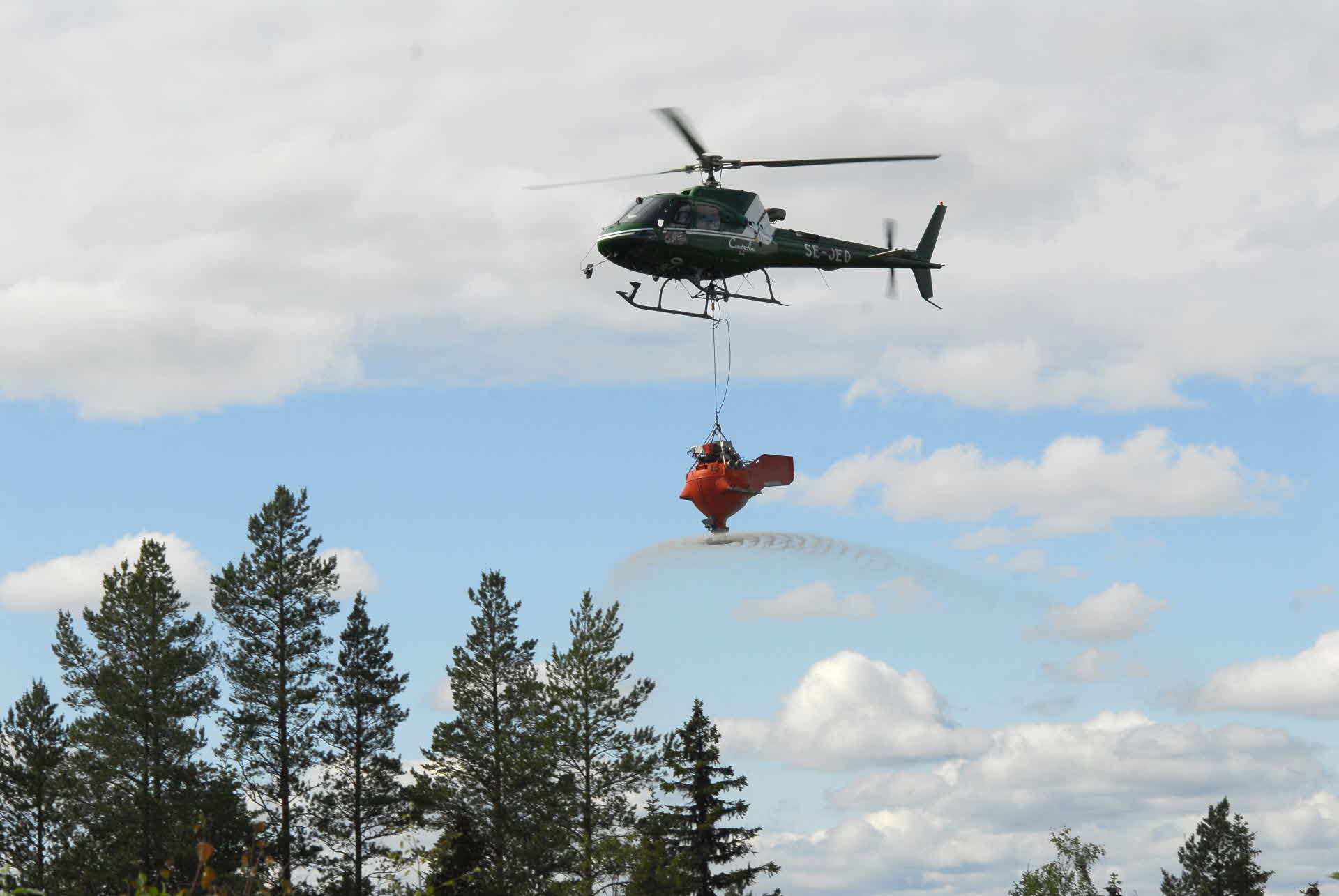
In the right soil, fertilization is an easy and profitable method to make the forest grow faster. We use fertilizer that contains nitrogen and lime. The lime in the fertilizer prevents soil acidification and the nitrogen acts as a fertilizer, and continues to feed the soil for a period after fertilization. SCA fertilizes the forests using helicopters up to three times at ten-year intervals. The soil is always fertilized after thinning and the final fertilization is performed about ten years prior to final felling.
Regeneration harvesting - again
When the forest is between 80 and 120 years old, it is time for final felling. Before final felling, we make a plan for the area that is to be felled. Forestry planning includes planning of timber production, how the area will be felled and nature consideration. The need for roads is also an important part of our planning. Our goal is to build roads with the right route so that we get the most usable road possible, while at the same time affecting nature as little as possible.
It is also now that we plan for what the next generation of forest will look like. In this way, the endless cycle begins again...
